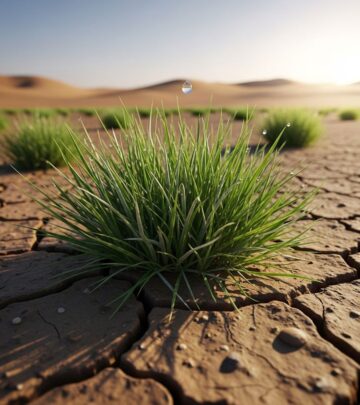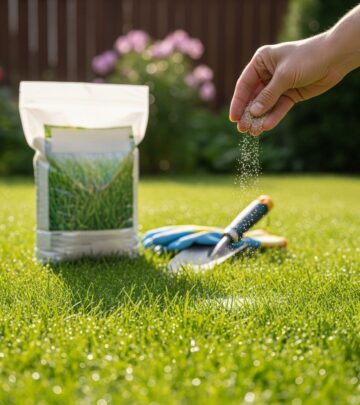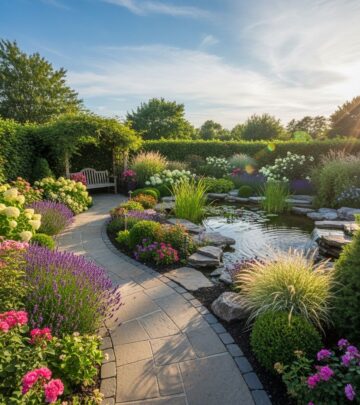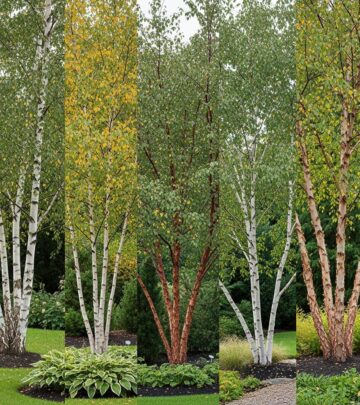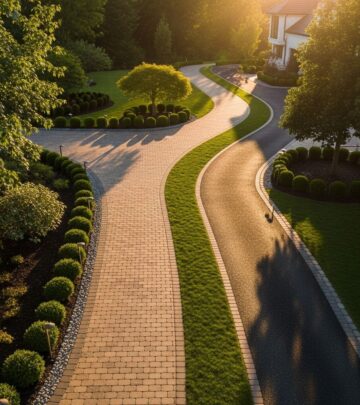Hardscaping 101: The Art and Fundamentals of Dry Stone Walls
Create mortar-free stone features that adapt to terrain shifts and invite wildlife.
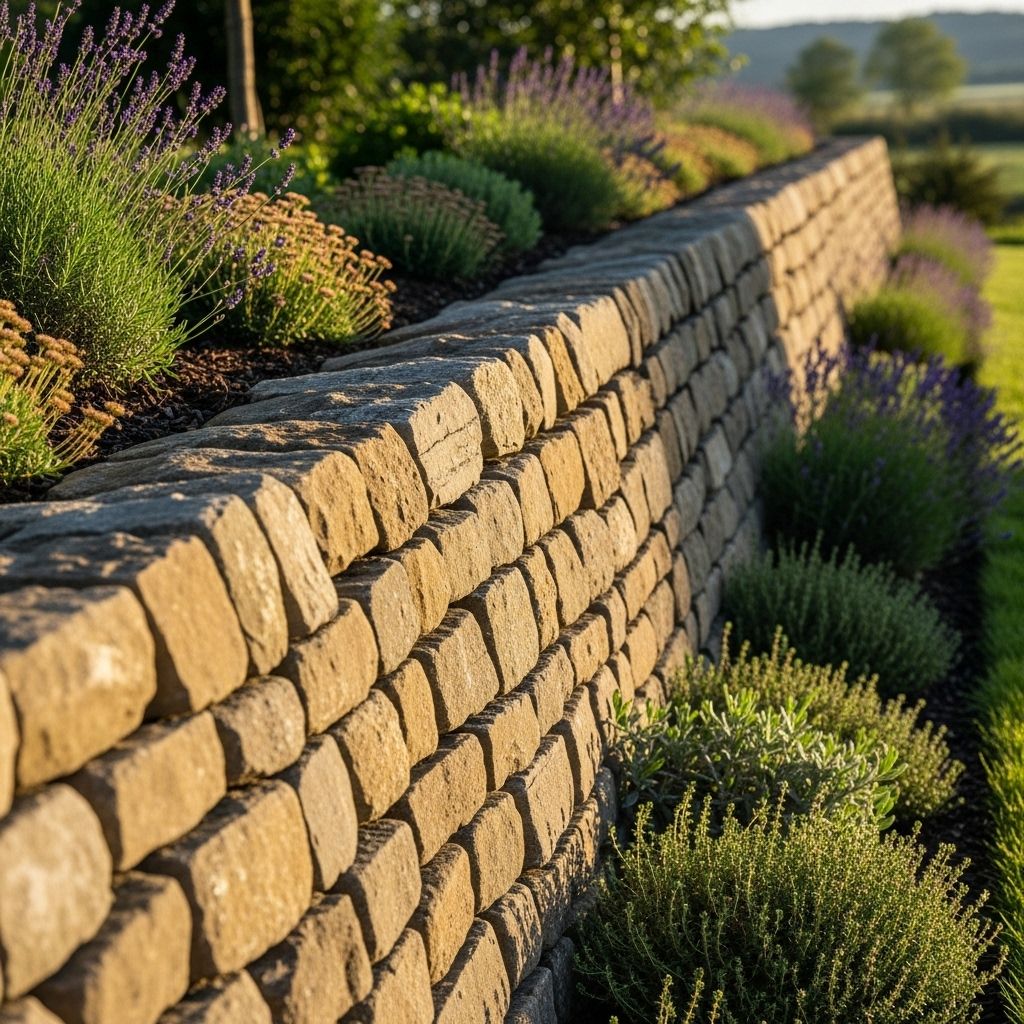
Image: HearthJunction Design Team
Dry stone walls have adorned rural and cultivated landscapes for centuries, standing as testaments to human ingenuity and an enduring aesthetic. Built with care but without mortar, these walls embody sustainability, craft, and ancient tradition. In this guide, discover the underlying principles, history, practical aspects, and inspiration behind the iconic dry stone wall, empowering you to integrate this classic hardscape into your own garden or landscape.
What Is a Dry Stone Wall?
Dry stone walling is the age-old craft of stacking stones without any binding material, relying solely on the weight, shape, friction, and gravity to hold the structure together. Unlike modern mortared walls, dry stone walls are flexible, enduring, and capable of adapting to environmental changes. This construction can be found across various cultures—from the British countryside to the terraces of the Mediterranean—serving as fences, borders, supports, and even art.
- Definition: Structures created by carefully placing stones together without mortar, relying on skillful arrangement for stability
- Common Uses: Garden boundaries, retaining walls, livestock enclosures, terracing, and feature designs
- Historical Reach: Found in Europe, Asia, and the Americas; notably mastered by the Incas and widely present in the UK and Mediterranean regions
A Brief History of Dry Stone Walls
The roots of dry stone construction reach back thousands of years, evolving differently in various climates and cultures. The Incas, for example, were renowned for their megalithic dry stone masonry, while generations of British farmers pieced together boundary walls from stones cleared off their fields. Over time, local tradition influenced stone shapes, laying styles, and intended wall function.
- Origins: Ancient agricultural and architectural applications in field clearance and terracing
- Global Practice: Techniques recognized as Intangible Cultural Heritage by UNESCO, practiced across Europe and beyond
- Sociocultural Importance: Dry stone walls foster collaboration and pass down intergenerational craft knowledge, serving as sources of regional pride
Dry Stone Wall Construction: Principles and Engineering
Successful dry stone walling combines an understanding of geometry, physics, available materials, and local terrain.
Key Principles
- Batter: Walls are intentionally built wider at the base and narrower at the top, creating a subtle A-frame that channels weight inwards, increasing stability
- Stone Orientation: Stones are laid with their length into the wall, tying inside and outside faces together for structural strength
- Tie-Stones or Through-Stones: Sturdy stones running crosswise connect both faces periodically, bonding the wall like integral anchors
- Hearting: Smaller stones fill the core, wedging larger exterior stones securely and preventing movement
- Course by Course: The wall is built in horizontal layers, gradually tapering as it rises for additional support
Types of Dry Stone Walls
| Type | Description |
|---|---|
| Double Wall | Two parallel rows of stones with a packed heart of smaller stones between, connected by through-stones |
| Single Wall | A single row, typically used for field edges or temporary barriers |
| Retaining Wall | Built into hillsides for terracing and erosion control, with a inward slant for stability |
| Feature Wall | Curved or patterned for decorative landscape purposes |
Planning and Designing a Dry Stone Wall
Every successful project starts with proper planning: understanding the purpose, assessing the site, and sourcing the right materials.
Site and Function Assessment
- Purpose: Decide if the wall is a boundary, retaining wall, or garden feature
- Site Topography: Analyze slopes, soil type, and drainage—the wall must rest on solid ground
- Style: Consider local traditions and landscape to create a wall in harmony with its setting
Materials Selection
- Stone Types: Use locally sourced materials for best results—fieldstone, quarried stone, slate, granite
- Shapes: Flatter stones offer more stability than rounded stones; irregular shapes require more fitting and skill
- Quality: Avoid friable or soft stones that may degrade over time
Building a Dry Stone Wall: Step-by-Step
1. Setting Out
- Mark the wall’s line with string, keeping curves gentle for construction ease
- Pace out the width according to the desired height (a general rule: base width is about half the height)
2. Preparing the Foundation
- Excavate to undisturbed, firm subsoil—remove all soft soil, turf, or organic matter
- Lay the largest, flattest stones as the base course, ensuring stability and even distribution of weight
3. Building Up the Wall
- Stack stones “length into the wall,” alternating seams between courses for strength
- Fill gaps and voids with smaller hearting stones—never rely on just large stones
- Maintain a batter by gradually setting each course slightly inward
- Install through-stones at intervals to tie both wall faces together
4. Finishing Touches
- Cap the wall with heavy, flat coping or top stones laid edge to edge—this locks the structure together and sheds water
- Check alignment and batter frequently using frames or batter boards
Why Choose a Dry Stone Wall for Your Garden?
- Sustainable: No cement, reusable materials, and minimal environmental disruption
- Flexible: Walls flex under slight ground movement or temperature changes instead of cracking like mortared structures
- Habitat Creation: Crevices form microclimates for beneficial insects, mosses, and small fauna
- Long-Lasting: When well-built and maintained, dry stone walls can stand for centuries
- Timeless Beauty: They complement gardens from traditional to modern, integrating harmoniously with plants and terrain
Dry Stone Wall Maintenance and Repair
Dry stone requires little intervention but benefits from occasional attention to keep it stable and attractive.
- Inspect annually for bulges, loose stones, or vegetation that may undermine the structure
- Remove saplings or roots early to prevent dislodgement
- Repair by carefully dismantling affected sections and rebuilding—never simply plugging gaps from the outside
- Re-use original materials; supplement with stones matching color, size, and type for authenticity
Common Mistakes and Troubleshooting
- Insufficient Tamping: Stones need firm seating and must not rock or wobble when set
- No Through-Stones: Omitting these ties makes walls prone to splitting
- Poor Hearting: If the center is hollow or loosely packed, the wall will eventually collapse
- Excessive Height: Don’t exceed a safe ratio of base-to-height; taller walls need wider foundations
- Improper Batter: Too vertical or outward-leaning walls are unstable
Design Inspiration: Creative Uses for Dry Stone Walls
- Informal Garden Edges: Define beds with low, rustic stone ribbons
- Retaining Terraces: Carve out level planting areas on slopes
- Feature Walls: Incorporate curves, holes, or split levels for dramatic focal points
- Wildlife Niches: Build pockets, shelves, or cavities for nesting birds or pollinators
- Seating: Integrate flat stones as benches or low seating ledges for garden enjoyment
Expert Tips for Building and Hiring
- Take a masonry training course or join a volunteer dig for practical experience
- Consult local regulations if near property lines or public rights-of-way
- Employ a professional dry stone mason for large, structural, or intricate projects to ensure safety and longevity
- Source stone locally wherever possible; not only does this blend better visually, it reduces transport costs and environmental impact
Dry Stone vs. Mortared Stone: Key Differences
| Feature | Dry Stone | Mortared Stone |
|---|---|---|
| Binding | No mortar; stones only | Mortar binds stones |
| Flexibility | Adjusts to ground shifts | Rigid; cracks if ground moves |
| Sustainability | Recyclable and eco-friendly | More resource-intensive |
| Longevity | Centuries when maintained | Requires periodic re-pointing |
Frequently Asked Questions (FAQs)
How long will a dry stone wall last?
With proper design and construction, many dry stone walls stand for hundreds of years, often outlasting mortared walls.
Do dry stone walls require foundations?
Yes. A stable wall starts with firm, undisturbed subsoil and a base course of the largest, flat stones for reliable support.
Can I build a dry stone wall myself?
Many small garden walls can be DIY projects with careful preparation and study. Larger or structural walls may require a professional mason for safety and durability.
Is dry stone walling eco-friendly?
Absolutely. No cement is required, local and reclaimed stones can be used, and these walls promote biodiversity by creating small habitats.
Do walls need maintenance?
Minimal—but annual inspections and prompt repairs of bulges or dislodged stones are recommended for longevity.
References
Read full bio of Srija Burman



